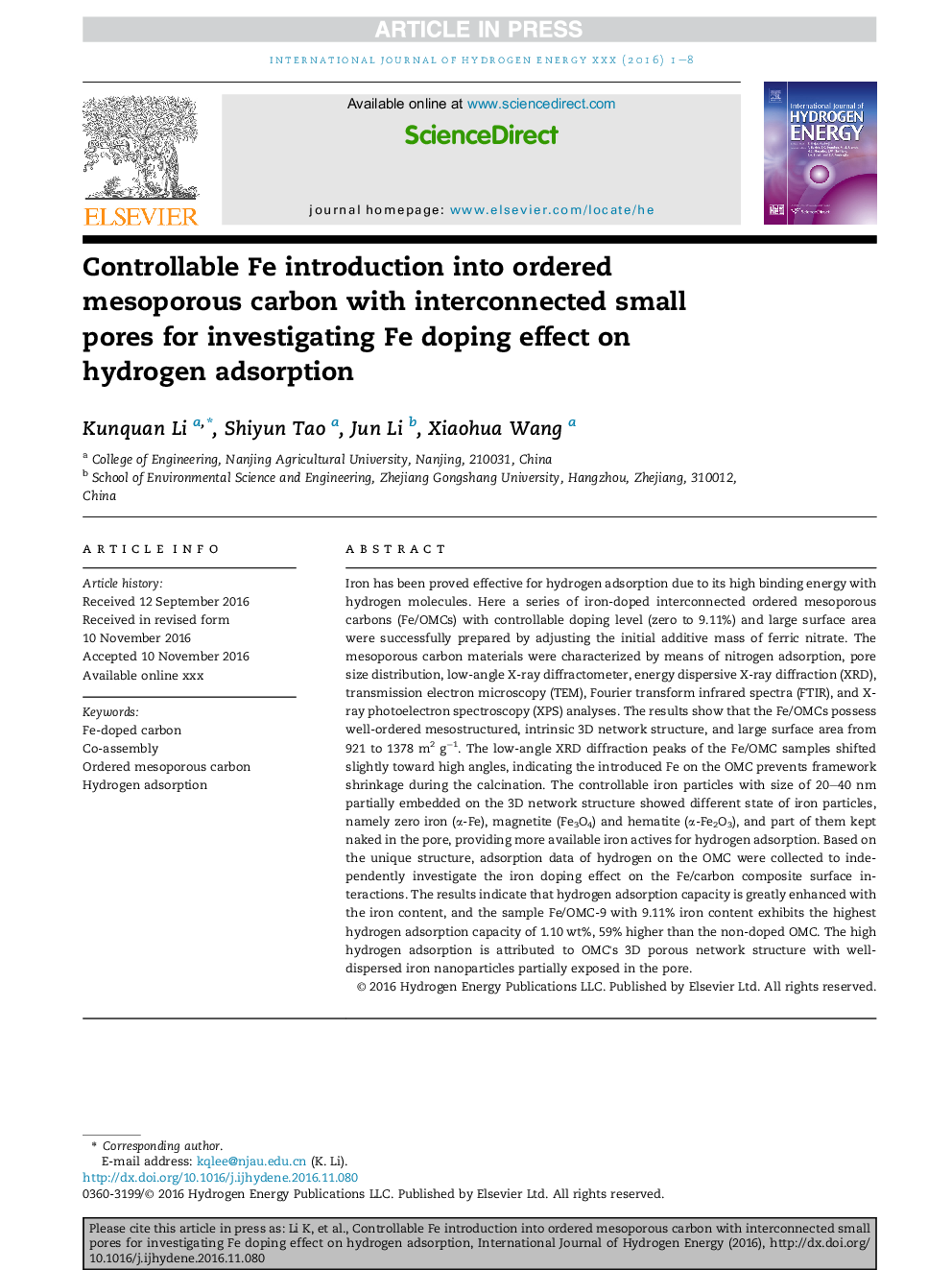| Article ID | Journal | Published Year | Pages | File Type |
|---|---|---|---|---|
| 5148349 | International Journal of Hydrogen Energy | 2017 | 8 Pages |
Abstract
Iron has been proved effective for hydrogen adsorption due to its high binding energy with hydrogen molecules. Here a series of iron-doped interconnected ordered mesoporous carbons (Fe/OMCs) with controllable doping level (zero to 9.11%) and large surface area were successfully prepared by adjusting the initial additive mass of ferric nitrate. The mesoporous carbon materials were characterized by means of nitrogen adsorption, pore size distribution, low-angle X-ray diffractometer, energy dispersive X-ray diffraction (XRD), transmission electron microscopy (TEM), Fourier transform infrared spectra (FTIR), and X-ray photoelectron spectroscopy (XPS) analyses. The results show that the Fe/OMCs possess well-ordered mesostructured, intrinsic 3D network structure, and large surface area from 921 to 1378 m2 gâ1. The low-angle XRD diffraction peaks of the Fe/OMC samples shifted slightly toward high angles, indicating the introduced Fe on the OMC prevents framework shrinkage during the calcination. The controllable iron particles with size of 20-40 nm partially embedded on the 3D network structure showed different state of iron particles, namely zero iron (α-Fe), magnetite (Fe3O4) and hematite (α-Fe2O3), and part of them kept naked in the pore, providing more available iron actives for hydrogen adsorption. Based on the unique structure, adsorption data of hydrogen on the OMC were collected to independently investigate the iron doping effect on the Fe/carbon composite surface interactions. The results indicate that hydrogen adsorption capacity is greatly enhanced with the iron content, and the sample Fe/OMC-9 with 9.11% iron content exhibits the highest hydrogen adsorption capacity of 1.10 wt%, 59% higher than the non-doped OMC. The high hydrogen adsorption is attributed to OMC's 3D porous network structure with well-dispersed iron nanoparticles partially exposed in the pore.
Related Topics
Physical Sciences and Engineering
Chemistry
Electrochemistry
Authors
Kunquan Li, Shiyun Tao, Jun Li, Xiaohua Wang,
